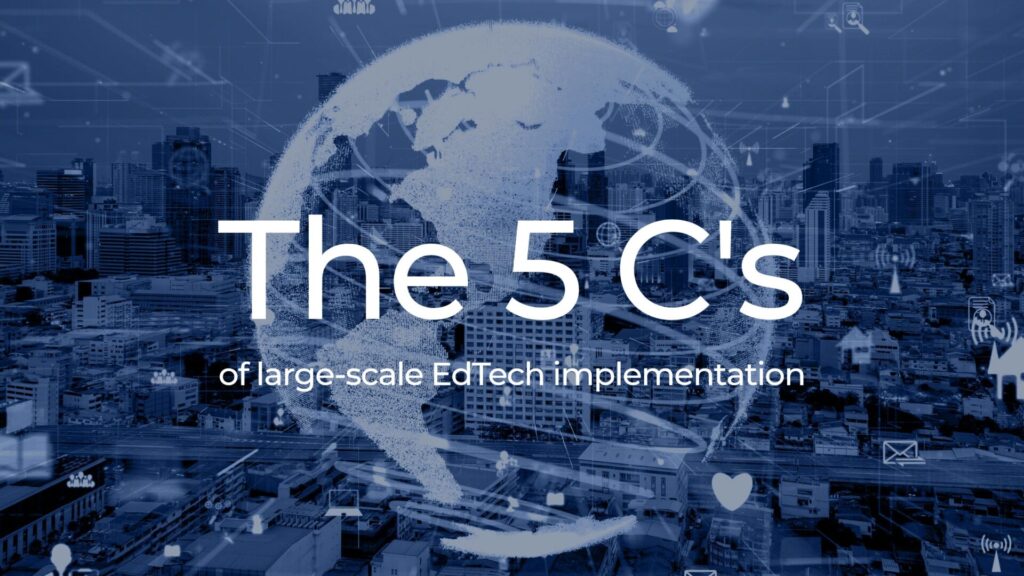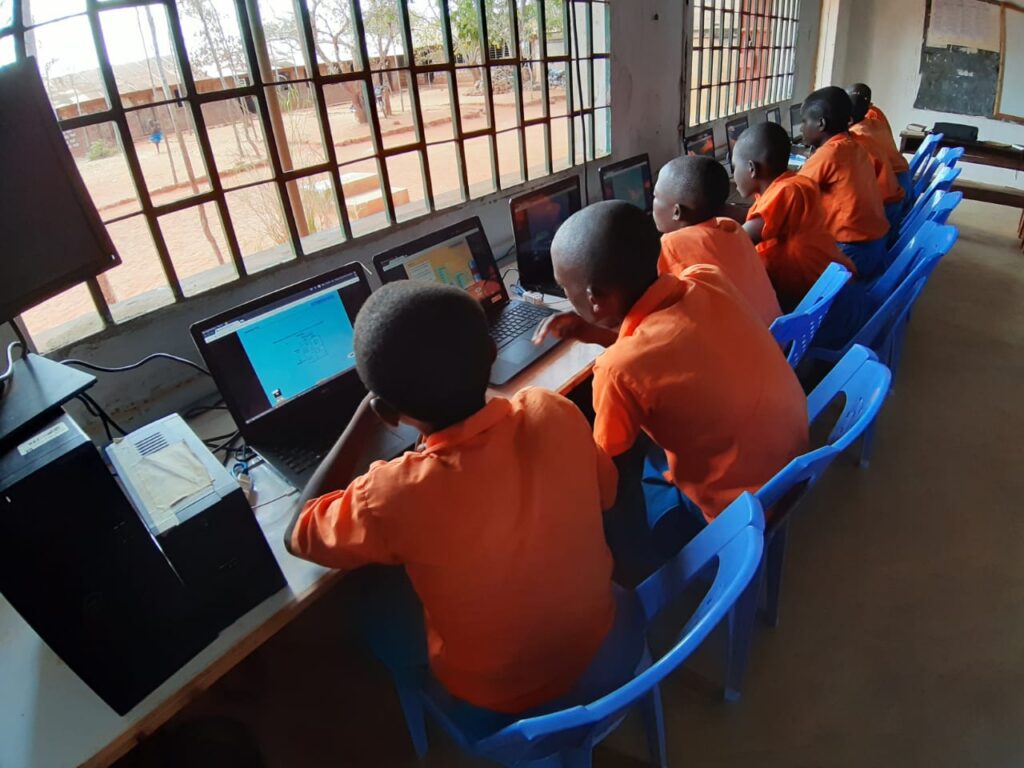The 5 C’s of EdTech
Ministries of Education and funding stakeholders in education have had ICT in education policies for some time with the ultimate aim of improving learning outcomes at scale. The practical manifestation of that has typically translated to initiatives that contain some combination of what we may term the “five Cs” of large-scale EdTech implementation:
- Computers
- Connectivity
- Content
- Capacity Building
- Context

But are the five C’s fit for purpose?
An OECD report into ICT-based education initiatives suggests that the impact of these efforts on moving the learning dial is limited when restricted to the five C’s. To date, even for countries that have invested heavily in ICT for education programmes, there has been no perceivable improvement in PISA results for reading, mathematics or science. Despite the evidence available, we see the prevalence of programme designs coming out of ministries of education and other stakeholder groups that predictably result in mixed learning outcomes.
Whizz has debated the limitations of the five C’s with our partners, Avanti, who have pioneered the exploitation of satellite broadband provision to facilitate learning experiences in remote and hard to reach locations in East Africa and other regions.
Here we share some of our experiences on what more is needed to ensure lasting educational impact through ICT.
Overview of the challenge
In some cases, just the first C, computers, have been deployed with the misguided expectation that equipment alone will drive results. The example of Kenya is pertinent. Their recent change in their Digital Learning Programme has seen tablets, armed with digital content, delivered to schools nationwide, attract utilisation rates as low as 5%. Even with the noble intentions and significant investment, the provision of ICT equipment to overcome issues of access is not enough to increase learning. To their credit, the government is evaluating the results and is seeking to adapt its programme with the aim of improving outcomes learning on a national scale.

Increasingly, there is recognition of the need for programmes that will ensure every child, regardless of background, can reach a baseline level of learning proficiency in reading and mathematics to secure them equal opportunities in a digital world. There are encouraging signs of ministries, in conjunction with education stakeholders, deploying IT infrastructure as a priority, building capacity and engaging local partners to supply connectivity so that the wealth of internet resources (with content provided by local curriculum authorities) can be harnessed. Even with this investment, however, achieving meaningful learning gains in learning outcomes at scale remains elusive. So what more can be done?
Customised content
Instead of perpetuating the delivery of generic content, which teachers have been able to do in front of class for as long as schools have been around, ICT for learning programmes should enable customised content, where each individual learner receives a personalised learning experience that caters to their individual needs and pace of learning throughout their education. Teachers with thirty plus students and forty-five minutes in a class cannot cater to each child’s individual learning needs consistently on their own. It is here that adaptive learning and virtual tutors can be leveraged by teachers. There are already examples of such platforms showing promising results (see Whizz’s Proof Pack).

Even with this in place, our experience has shown that the addition of customised content does not automatically result in effective large-scale implementation. This is where the sixth C comes in, which I believe is a game-changer for ICT in Education.
Introducing the sixth C
The missing C is course correction, which underpins Whizz’s approach to programme design, implementation and evaluation. Our successes within large-scale projects worldwide owe to this paradigm shift in the way we work with learning data.
At the heart of course correction is the ability to gather actionable insights and then adapt all aspects of implementation in response. The key is the ability to measure learning impact in real-time, promoting activities that are demonstrating positive impact and discarding others. The process is iterative, and the greater the velocity in which these decisions can be made, the faster the desired learning impact can be achieved. Course correction calls on several capabilities:
- the ability to access live learning data on demand
- the provision of learning data in a format that is both readily accessible and straightforward to interpret
- an ability to apply contextual insight on the ground to drive incremental change
- continuous measurement that enables rapid cycle evaluation of each action
The accumulation of data is automatic through Whizz Education’s live reporting system, which enables M&E “on-the-go”. However, data alone simply amounts to information and it’s only when data outcomes are combined with contextual feedback from the field that we extract the “story” behind the statistics. It is when the two combine that we achieve actionable insights:
Data + Story = Insight
Live data is a by-product of learning
Course correction is driven by an ethic of continual improvement to implementation. This could include adjustments to the educational programme design, adaptations to teacher capacity building, stakeholder engagement or indeed the learning platform itself. Course correction can help achieve incremental improvements in all areas of the programme, and the combined effect of these changes over time are truly transformative.
In our recently published white paper Data to Insight to Action, we share how, through the application of the five C’s where customised content and continuous learning was implemented, we achieved a 17% improvement in the underlying learning progress rates for students in rural Kenya. While positive in itself, it was only when the crucial sixth C of course correction was employed over a four-year period we saw an astounding further 87% improvement in learning progress rates.
Course correction is a mindset, a process, a discipline and a capability all at once. It marks a huge shift away from the standard approach to monitoring and evaluation, which typically involves running a baseline, a midline and an end line assessment. Whilst seeking out effect sizes in this way is useful for evaluation purposes, this approach cannot identify the incremental changes needed to steer projects towards their intended destination.
The sixth C recognises that there are no “silver bullets” to scalable education effectiveness. It represents a commitment to multiple improvements managed closely over time. Stakeholders must not only put in place the five Cs to enable course-correction in the first place, they must commit to rapid cycle evaluation that drives continual improvement.
The commitment to incremental improvements, which combine to achieve long-term impact, match the ambition of the Sustainable Development Goals (SDGs). It often takes several years for course-correction to have the compounding effect required to achieve transformational educational impact.
Click here to see more of our work at Whizz Education, including our case study on Project iMlango.
